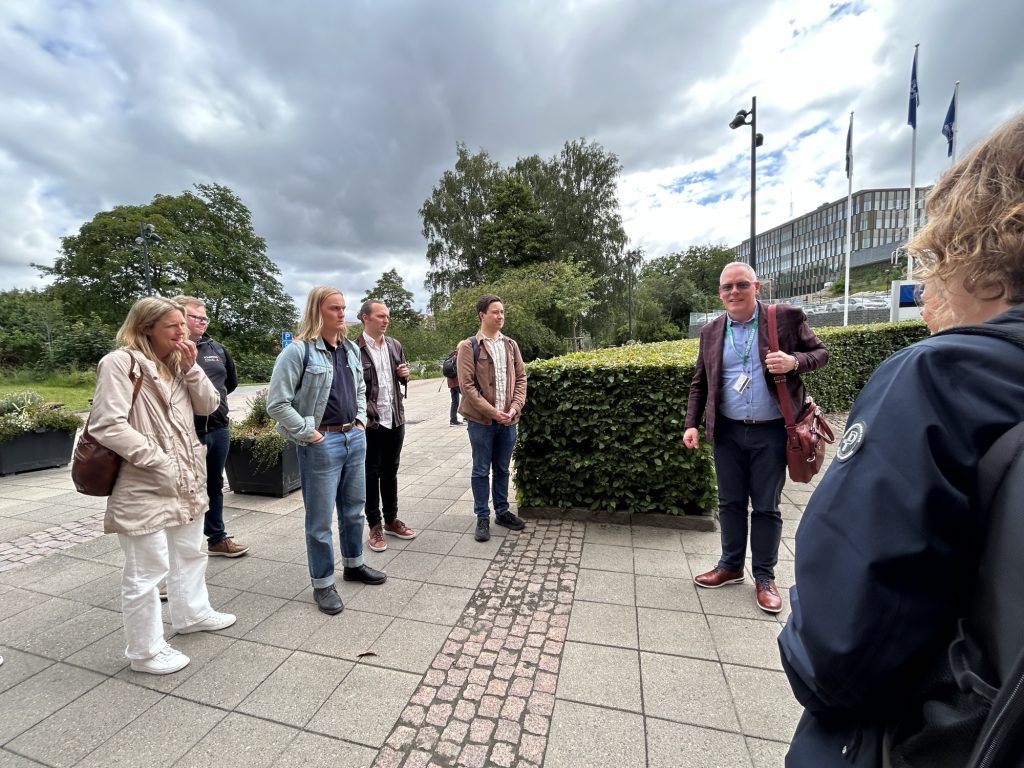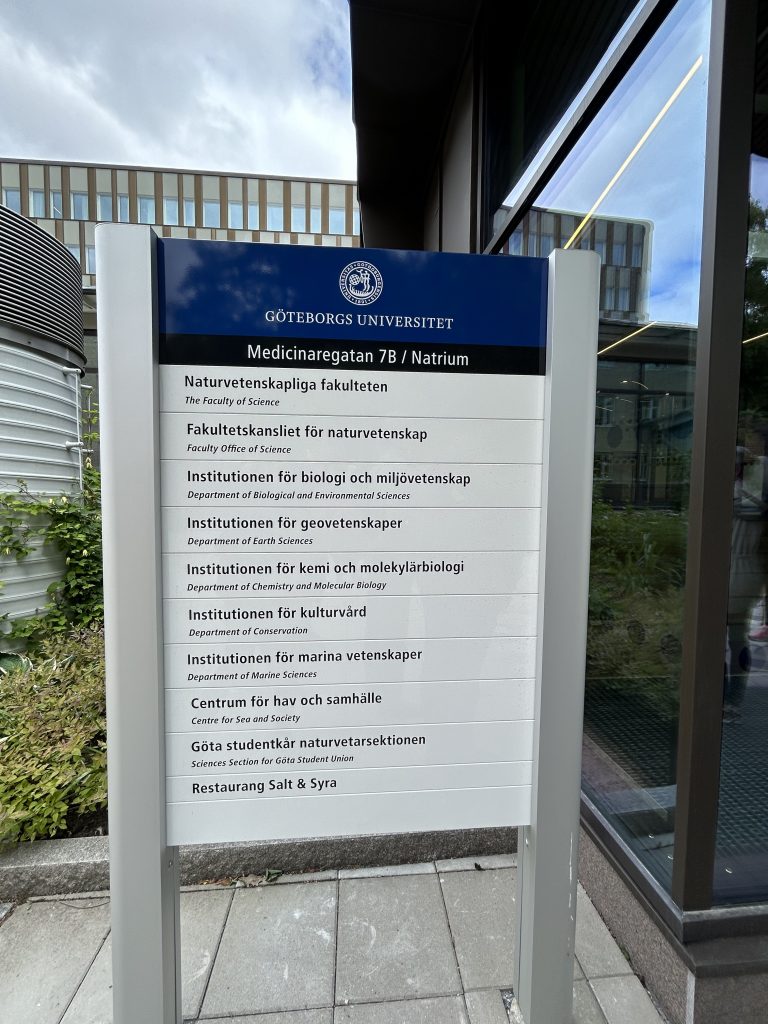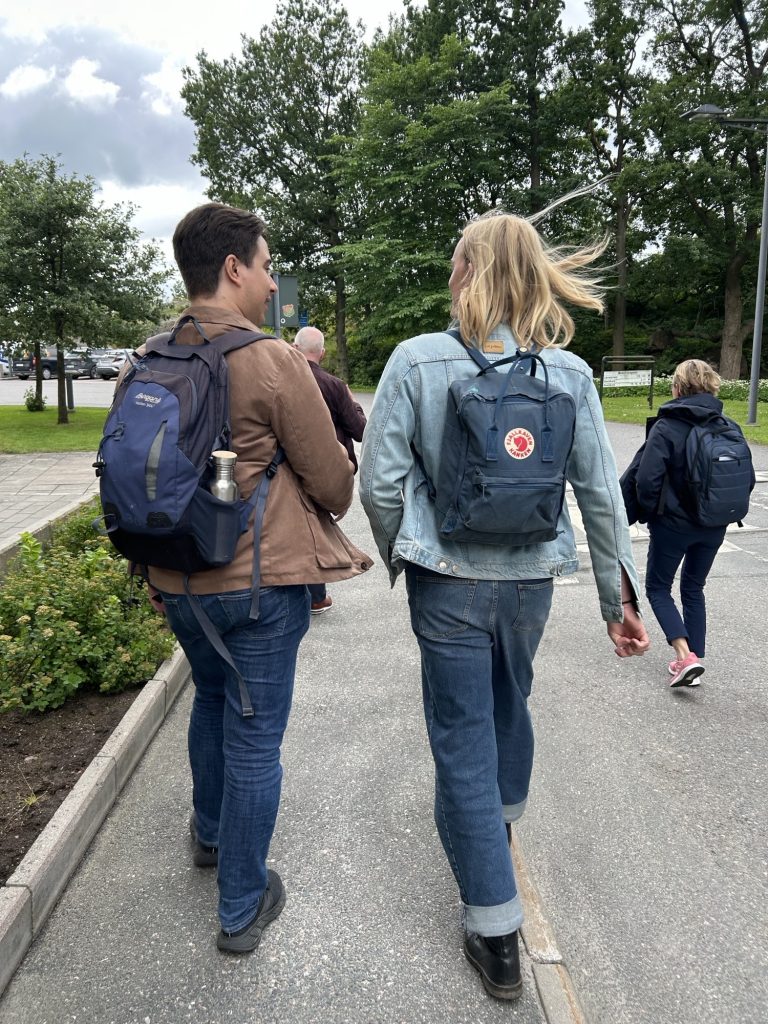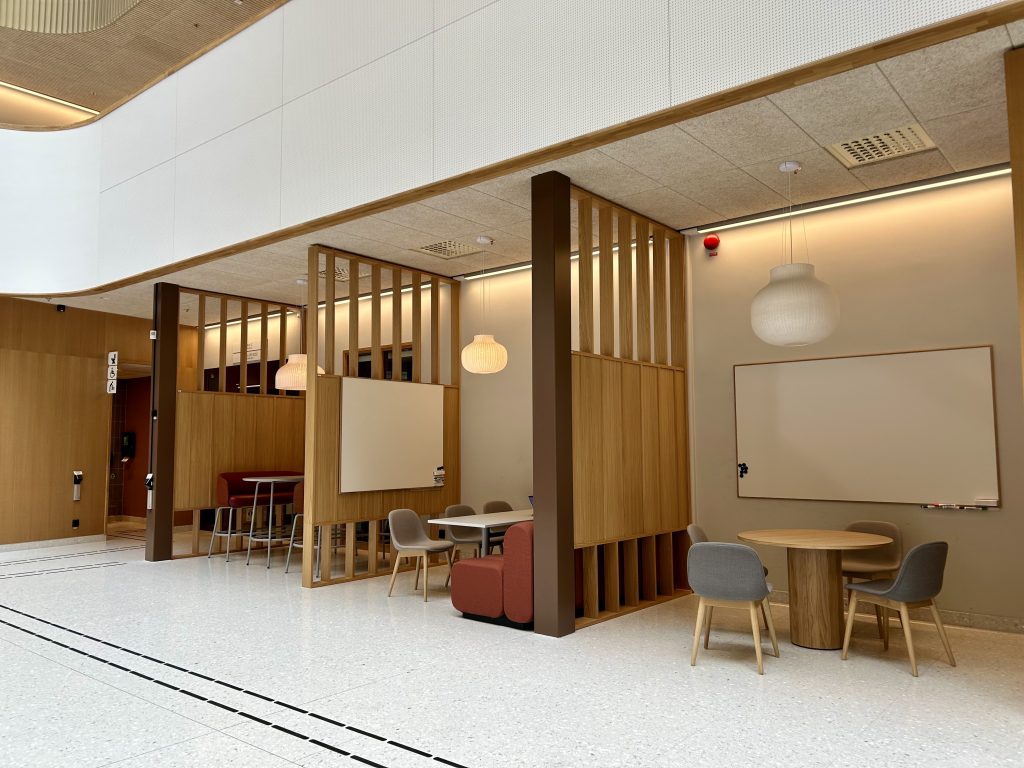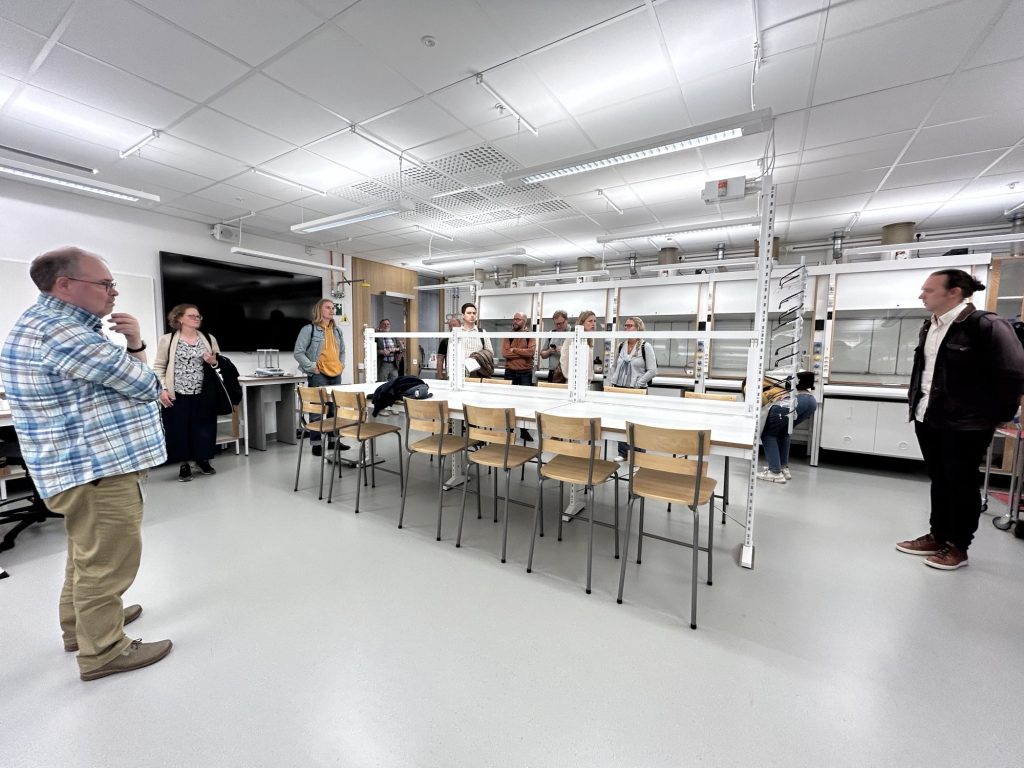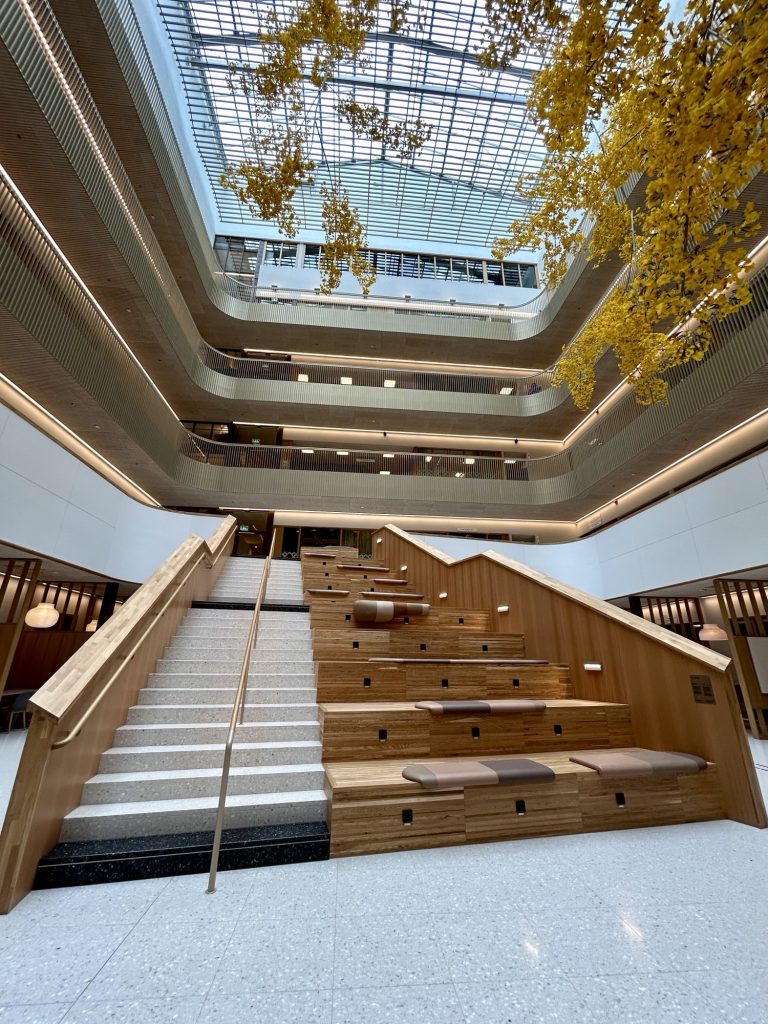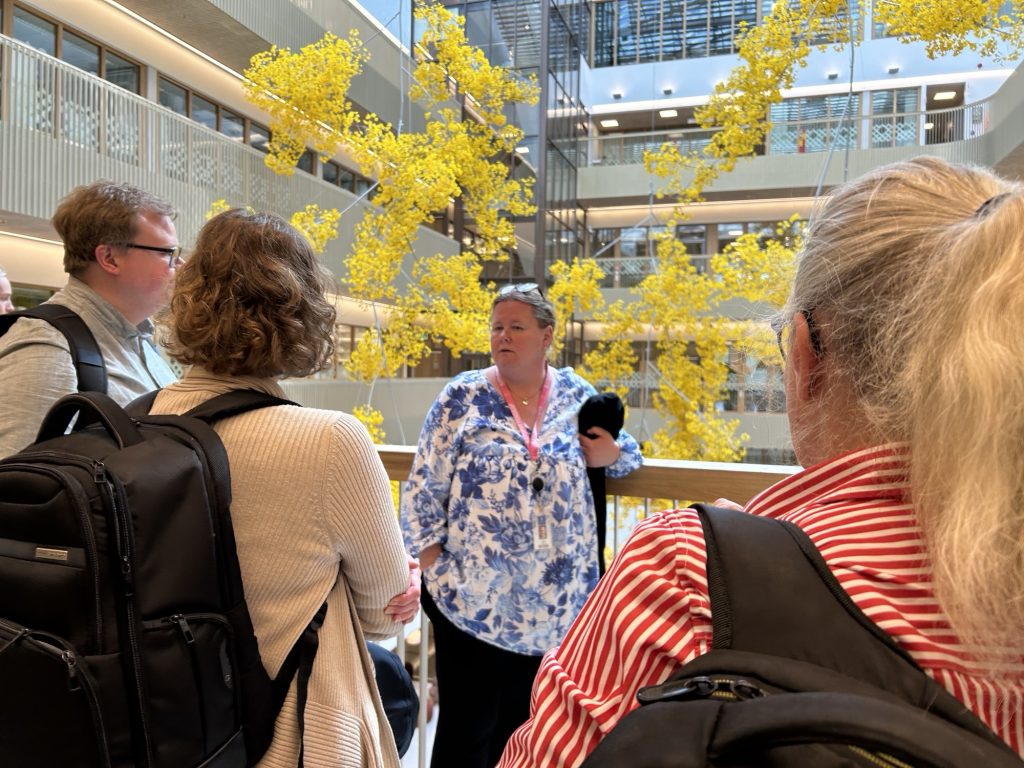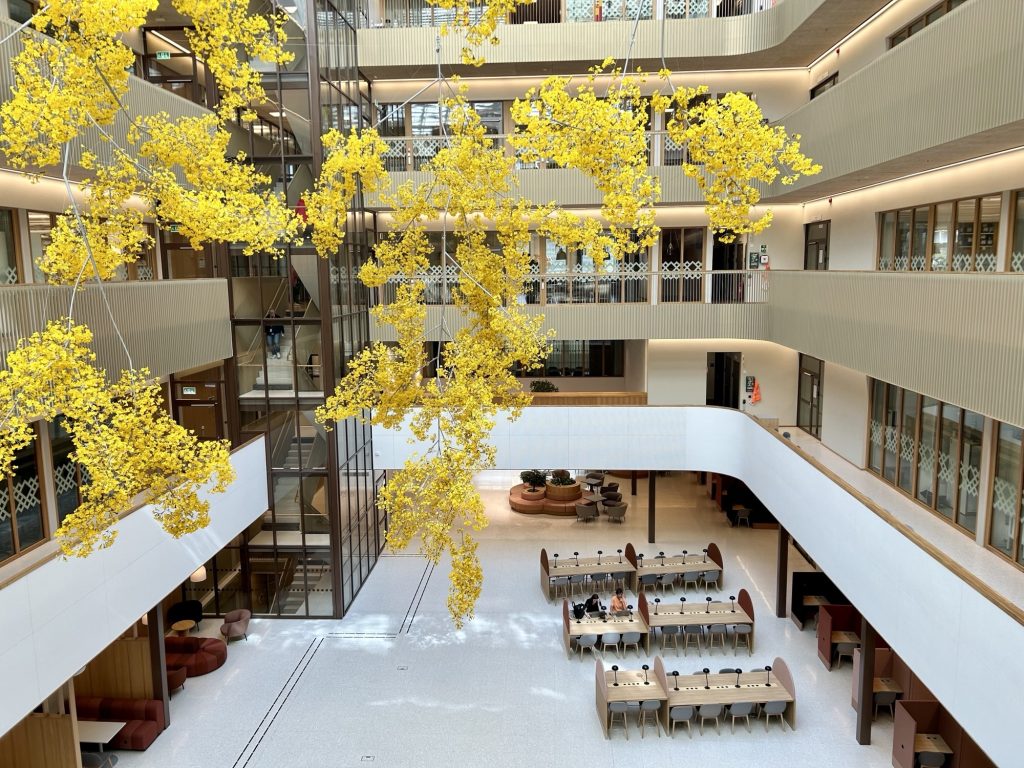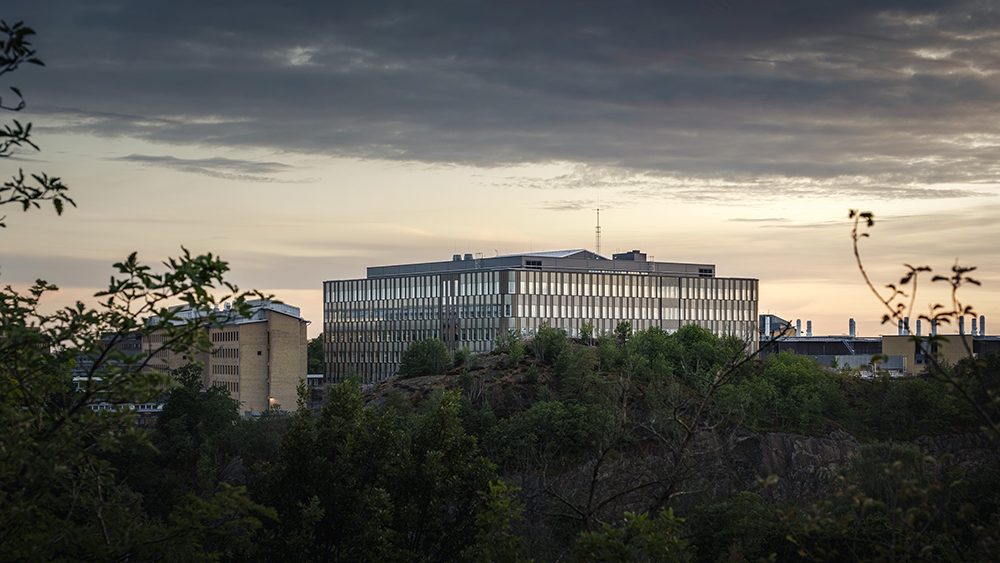In August 2023, the Faculty of Science at the University of Gothenburg moved into the newly constructed Natrium building on Medicinareberget. To gather valuable insights and lessons applicable to the Science Village establishment project, the Stage 2 project team organised an inspiring study tour to Natrium in mid-June. The tour was attended by 15 dedicated participants with representatives from the project group, Nanolab Science Village, the Departments of Physics and Chemistry, LU Building, and the Faculty of Science Office.
The group was warmly welcomed by Mats Lilja, project manager for Natrium, Gustav Bertilsson Uleberg, Head of the Faculty of Science office, Charlotte Odbratt, project manager from Akademiska Hus, and Åsa Arrhenius, Head of the Department of Biological and Environmental Sciences. During the afternoon, they provided an introduction to the project, shared their experiences and insights from the building process, and offered an extensive tour of Natrium.
About Natrium and the Project
Inaugurated in 2023, Natrium is home to around 3,000 students and 500-600 staff from five departments and the Faculty Office. The building features advanced laboratory environments, teaching and office spaces, study areas, and a restaurant.
The project includes a total of 32,000 m² of new construction and 2,000 m² of renovations. The new construction consists of two seven-storey buildings with an intermediate section that includes an atrium and meeting rooms. The building is certified according to “miljöbyggnad” level gold and incorporates several energy-efficient solutions such as solar panels on the roof and demand-controlled ventilation and lighting.
The co-located departments include Biology and Environmental Sciences, Chemistry and Molecular Biology, Marine Sciences, Earth Sciences, Conservation, and the Faculty Office for Natural Sciences. The Department of Physics and the Department of Mathematical Sciences remain in their existing premises near Chalmers to maintain their close collaboration.
Natrium was built with the aim of further developing the Faculty by co-locating its departments and renewing the campus with a modern building. The co-location of departments promotes collaboration and joint development within the same building, the group was told by the Head of Faculty Office. It also aims to maximise the use of space by sharing teaching and meeting rooms, leading to economic and sustainability benefits. All departments share meeting and teaching rooms, which are jointly booked. This has resulted in increased utilisation of the facilities.
The co-location also offers the opportunity to coordinate and develop courses and programmes and to collaborate with the Sahlgrenska Academy’s medical research and education, which is located nearby. A newly built facility also provides the opportunity to offer advanced laboratories, enhancing the university’s appeal to researchers and students, the group learned during the presentation.
In terms of organisation, the Faculty decided not to make any structural changes. The Board decided that the departments and administrative support would remain as before in a co-location. The administrative support has been placed in the same area near the staircase, creating a vertical link between the support organisations.
Learn more about Natrium here.
Lessons Learnt and Insights for the Project Team
- Shared Facilities and Resources: Natrium has created a common pool of teaching and meeting rooms, which has increased utilisation and promoted collaboration between different institutions. Everything from offices and laboratories to meeting rooms is shared.
- Flexibility and Adaptability: The building is designed with modular walls, allowing for customisation as needed. There are individual rooms and meeting rooms to accommodate different types of work.
- Business Development and Engagement: Engagement of all parties involved is crucial. Building relationships through joint activities and celebrating milestones is important. The project has actively sought to involve different parts of the organisation throughout the process.
- Communication and Understanding: Effective communication between all parties in the project is essential to avoid misunderstandings and build commitment. Ensuring that everyone speaks the same language and understands terms and costs in the same way is vital for the success of the project.
- Keeping to Budget: Streamlining the project by distinguishing between what is necessary and what is desirable is key to staying within budget. The Natrium project was meticulous about removing all unnecessary costs and managed to stay on budget and complete on time, despite challenges such as the war in Ukraine and Covid-19.
- Planning Just Enough: While planning is important, sometimes decisions must be made without all details being finalised. Overly detailed plans can take a lot of time and quickly become outdated. Acting and adjusting during the project is sometimes necessary. Generic plans can often suffice, and finding the right balance between detailed planning and flexibility is a challenge.
- The Building is Larger than a Single Department: A house management team oversees the building, guided by a policy document that covers all aspects of the building’s operation. A house coordinator is planned for the future to streamline management further.
- Billions of Details: In a large construction project like this, there are countless details to manage. However, significant cost savings can be achieved by carefully considering every little detail.
Visiting Natrium has provided valuable insights and inspiration that can be brought back to the Science Village project. By applying these lessons, there is the potential to create a successful and sustainable environment for students and researchers in the Science Village.
Pictures from the study tour to Natrium. All pictures by Cecilia Schubert.
